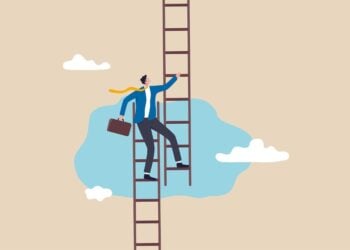We all have those moments as an attorney where we realize our profession makes us stand out in our communities. My first memorable moment came when I was managing my sons’ U10 soccer team.
At a team family meeting, the coach kept deferring a majority of the questions to me, which I found odd since I didn’t know much about kid’s soccer leagues. Someone asked the coach why he was having me answer the questions. By way an explanation, he said, “Maya is an attorney.” Th ere was a collective, “ahhhh,” from the group. In that moment, I was instantly seen as someone capable of making prudent decisions for the group just because of my profession.
Maybe your story is different or quite similar to mine, but the result is clear. We, as lawyers, are collectively and individually seen as leaders in our communities.
However, here’s the irony. Although we are leaders in our communities, we haven’t shown leadership in areas like diversity and inclusion. Our profession is ranked dead last in diversity demographics. Law offices are not the friendliest places for lawyers of color – as a result, we keep losing them after a few years.
While most recognize our profession as a laggard when it comes to diversity and inclusion, too many fail to act. As leaders, we know we must address and counter injustices wherever they occur – especially close to home, in our offices and professional circles.
My firm, Lindquist & Vennum, hired me not to just learn more about the problem, but to do something about it. I continue to have many conversations, internally and externally, where many say they want to help. The problem is they don’t know where to start.
How do we reverse decades of ingrained culture, systems and attitudes? We know we can’t do it overnight, but each one of us, as a leader, can do our bit. I believe if those in our profession took the following steps, we would see appreciable change.
No. 1 – Learn about unconscious bias and how it plays out in the work environment. All humans have unconscious bias, but we may not be aware of how our unconscious bias gives us blind spots and limits opportunities for others. On the job, we don’t intend to discriminate in the hiring or promotion of diverse attorneys, but unconsciously we may be doing so.
No. 2 – Reach out and befriend, mentor, or sponsor an attorney from a different background. Increasing inter-group contact helps one learn about other cultures, challenge assumptions and acts as a de-biasing agent. Learn to communicate differences and build your cultural competency.
No. 3 – Create a work environment that encourages inclusivity and values diversity. Diversity is not about counting the numbers but building a culture of inclusion by respecting and accepting our differences. Our stated values and commitments should line up with our actions. Th is is not about giving special treatment to any one group, but creating a better system for everyone.
Engaging with those different from us helps us expand our perspectives and enriches our lives. Diversity and inclusion strategies fuel growth in our organizations, unlock new ideas and allow us to access untapped markets. People who come with a different worldview will find new ways to increase efficiencies.
As leaders, we can make the changes needed in our profession. It starts with you and me. I think of the famous Emma Watson quote, “In my moment of doubt, I told myself firmly: if not me, who?”
Maya Salah







